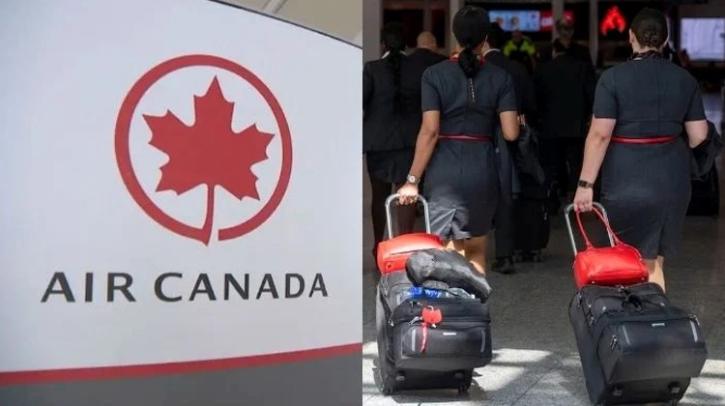Air Canada flight attendants have continued their strike action despite a government-mandated back-to-work order, escalating tensions between the airline and its workforce. The ongoing labor dispute, centered on contract negotiations and workplace conditions, has led to significant disruptions across Canada’s busiest air routes. As negotiations stall, the defiant stance of the flight attendants underscores the deep-rooted challenges facing the country’s aviation sector amid a backdrop of rising inflation and labor unrest.
Striking Air Canada Flight Attendants Challenge Back-to-Work Directive
Air Canada flight attendants have taken a bold stand by continuing their strike despite a federal back-to-work directive issued earlier this week. The order, aimed at swiftly ending the labor disruption impacting thousands of passengers across North America, was met with firm resistance from union leaders and rank-and-file workers alike. The ongoing dispute centers on demands for improved wages, enhanced COVID-19 safety protocols, and better working conditions, issues the attendants argue have been ignored for too long.
The strike has caused widespread cancellations and delays, prompting concerns from industry analysts and travellers. Below is a summary of key impacts observed since the strike began:
| Impact Area | Details |
|---|---|
| Flight Cancellations | Over 1,200 flights cancelled in first 5 days |
| Passenger Delays | Average delay of 3.5 hours reported |
| Employee Participation | Strike involvement exceeds 90% |
| Negotiation Status | Talks remain at an impasse with no clear resolution |
- Union Statement: “Our members are determined to maintain pressure until their concerns are adequately addressed.”
- Government Response: Calls for mediation while monitoring compliance with the directive.
- Public Reaction: Growing frustration mixed with support for flight attendants’ cause.
Impact of the Work Stoppage on Airline Operations and Passenger Travel
The ongoing work stoppage by Air Canada flight attendants has resulted in a significant disruption across the airline’s network. Multiple flights were abruptly canceled, forcing thousands of passengers to scramble for alternative travel arrangements. Major Canadian airports, including Toronto Pearson and Vancouver International, experienced chaotic scenes as travelers expressed frustration over last-minute notifications and long wait times at customer service counters. The airline’s attempts to reroute passengers using partner carriers and last-minute bookings have so far provided only limited relief.
Airlines industry experts highlight several key consequences stemming from the strike:
- Reduced flight capacity leading to overcrowded terminals
- Surge in travel prices due to limited seat availability
- Heightened pressure on airline staff and ground operations
- Ripple effects on cargo shipments and connecting passenger itineraries
| Airline | Flight Cancellations | Average Delay (hours) | Passenger Impact |
|---|---|---|---|
| Air Canada | 350+ | 3.5 | High |
| WestJet | 50 | 1.2 | Moderate |
| American Airlines | 30 | 0.9 | Low |
Strategies for Negotiating a Resolution Amid Ongoing Labor Disputes
Effective resolution during labor disputes hinges on open communication and mutual respect. Both parties must prioritize dialogue over escalation, ensuring that concerns are clearly articulated and addressed without resorting to further legal or public confrontations. Incorporating mediators or third-party negotiators can bridge gaps, providing neutral perspectives that help untangle complex issues and facilitate compromises. It’s essential to remain flexible while keeping the ultimate goal in mind: restoring workforce harmony and protecting the public interest.
Key tactical approaches include:
- Establishing clear, achievable goals for negotiation sessions to maintain focus and momentum.
- Employing data-driven insights such as financial forecasts and operational impact assessments to inform decision-making.
- Implementing phased agreements that allow for incremental progress rather than all-or-nothing demands.
- Utilizing confidential caucuses for candid dialogue away from public scrutiny.
| Strategy | Purpose | Impact |
|---|---|---|
| Third-party mediation | Neutral conflict resolution | Reduces tension, promotes compromise |
| Phased agreements | Stepwise problem-solving | Builds trust over time |
| Data-driven insights | Inform strategic decisions | Encourages objective discussions |
In Summary
As the Air Canada flight attendants continue to defy the back-to-work order, the standoff highlights ongoing tensions between the airline and its workforce amid contract disputes. With negotiations reportedly still underway, travelers can expect disruptions to persist in the near term. Industry observers and passengers alike will be closely watching developments, as resolution remains critical to restoring normal operations and confidence in one of Canada’s largest carriers.




